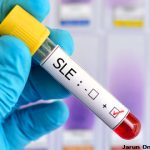Additionally, Dr. Arnaud noted that big data, such as artificial intelligence, machine learning and text mining, will undoubtedly play a role in improving early and accurate diagnosis of disease and predicting the risk of complications for individual patients. In 2021, Adamichou et al. published research on the SLE Risk Probability Index (SLERPI), a clinician-friendly algorithm for aiding SLE diagnosis developed using machine learning techniques.5
Technology is quickly helping improve diagnostic studies in the realm of image recognition software. This includes deep learning-based smartphone platforms that can detect features consistent with cutaneous lupus erythematosus, as well as automated classification systems that use uploaded images of ANA-HEp-2 cell immunofluorescence stains to identify the correct pattern for the ANA.
Treat to Target
Treat-to-target strategies must be rigorously evaluated as a potential means to improve patient outcomes, according to Dr. Arnaud. The first research into using a treat-to-target approach to manage patients with SLE was published in the early 2010s, with many more such studies emerging since.
The concept of treat to target comes from the fields of cardiovascular medicine and diabetes management. It involves setting a target, employing a treatment and then measuring if the target is achieved. For SLE, several questions arise regarding treat to target, including:
- What is the optimal treatment target for SLE?
- How often should we check if the target has been reached?
- What should we do after the target is achieved, and when it is not achieved?
According to Dr. Arnaud, the best target is disease remission, which is associated with lower risks of damage, cardiovascular events and death. Remission also correlates with improved quality of life, the prevention of disease flare and glucocorticoid discontinuation.6
However, Dr. Arnaud noted that a plan B is needed in case disease remission cannot be achieved. This backup plan may be achieving a lupus low disease activity state (LLDAS). The LLDAS is characterized by the absence of activity in major organ systems, a prednisone dose of no more than 7.5 mg per day and standard maintenance doses of immunosuppressive treatments.7
LLDAS can best be thought of as a “transition state.” In Dr. Arnaud’s view, we should not desire achieving this state. Among other concerns, the glucocorticoid dose remains too high to be acceptable in the long term. Rather, we should recognize that patients may need to reach this state before moving toward disease remission.
Pulse Therapy
In recent years, the treatment options for patients with SLE have expanded. However, the question about what to do with respect to corticosteroids, including pulse therapy, for these patients remains.

